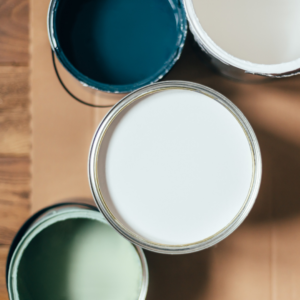
5 Easy Steps to Paint Over Dark Walls with Light Colors
Let’s face it: painting over dark walls with a light color is like trying to cover up your questionable college decisions—it’s going to take some effort. But don’t worry, we’ve got your back. This guide breaks it down into five steps so simple, you might actually enjoy the process.
Grab your brushes, your rollers, and maybe a snack because it’s about to get messy.
Step 1: Prep the Room
Before you start painting, you need to get the room ready. Move all the furniture out, or at least push it to the center of the room and cover it with drop cloths. This will protect it from paint splatters. Use painter’s tape to cover the edges of trim, windows, and doors to keep your lines neat and clean. Taking time to prep will make a big difference in how the final paint job looks.
Don’t forget to protect the floor! Lay down tarps or plastic sheets to catch any drips and spills. It’s always better to be safe than sorry when it comes to messes.
Step 2: Clean the Walls
Dark walls can collect dust, fingerprints, and smudges that might ruin your paint job. To avoid this, wipe them down with a damp sponge and a little mild soap. It’s like giving your walls a much-needed cleanup before their makeover.
Be sure the walls are completely dry before you start painting. Painting over wet walls can lead to problems, so take the time to let them dry fully.
Step 3: Prime the Surface
Primer is the hero you need when painting over dark walls. Without it, your light-colored paint won’t work as well. Use a good-quality primer made for covering dark colors. Put on one or two coats to create a solid base for your new color. It’s an extra step, but it’s really important—kind of like preheating the oven before baking a cake.
Roll the primer onto the walls evenly. It doesn’t have to look perfect because the paint will make everything look great in the end.
Step 4: Apply the First Coat of Paint
Now comes the exciting part—painting with your light color! Start by applying one even coat and make sure to cover the surface as evenly as possible. Don’t worry if the dark color shows through a bit after the first coat.
This is completely normal, so stay calm and be patient. The second coat will work its magic and give you the smooth, bright finish you’re looking for.
Step 5: Add a Second Coat and Finish Up
The second coat is where the magic happens. This is when your walls start looking bright and fresh instead of dark and dull. If the dark color still shows through, don’t worry—you might need a third coat. It’s not your fault; some colors just need extra help.
When you’re happy with how the walls look, carefully peel off the tape, clean your brushes, and take a step back to admire your work. You’ve done it—your room looks amazing!
Final Thoughts
Painting over dark walls with a light color is no small feat, but it’s totally doable—and oddly satisfying. Sure, it takes a little effort, but the end result is worth it. So roll up your sleeves, blast your favorite playlist, and turn your interior painting project into a colorful adventure. Your walls (and your sanity) will thank you.
Ready to refresh your walls? Our expert painters are just a call away.